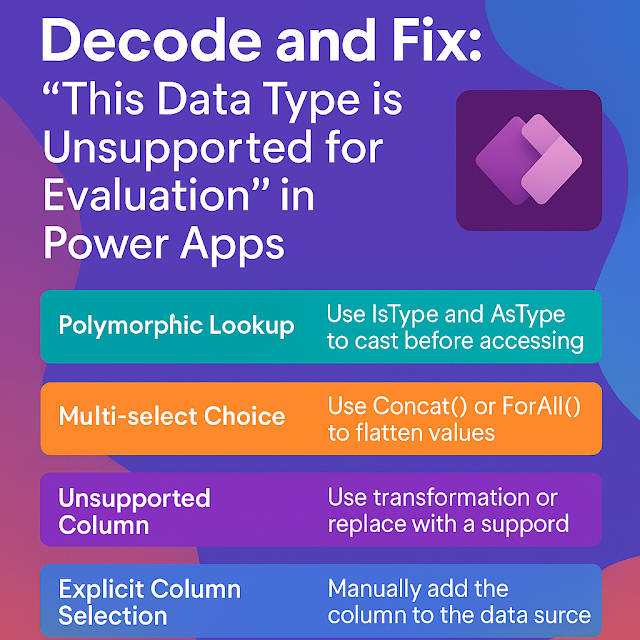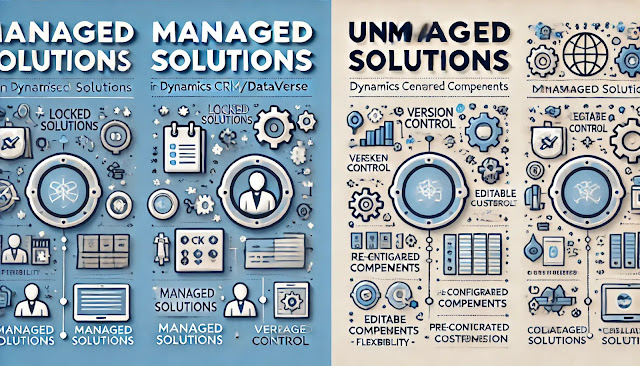Dynamics 365 Field Service : Configure offline profiles and synchronization features
In today's fast-paced, always-on service industry, field technicians can’t afford downtime due to poor or no internet connectivity. Imagine being on a remote oil rig, a rural highway, or inside a basement — you still need your work orders, customer data, asset history, and manuals. That’s where offline capabilities in Dynamics 365 Field Service come to the rescue.
This article dives into how to configure offline profiles and optimize synchronization features to empower your mobile workforce, even when internet access is unreliable.
What is Offline Capability in Dynamics 365 Field Service?
Offline capability allows technicians to continue using the Field Service (Dynamics 365) Mobile app without an internet connection. They can:
- View work orders
- Update service tasks
- Capture customer signatures
- Fill inspection forms
- Sync data back to the server once online
This is made possible by Offline Profiles, which define what data is available offline, and Synchronization Settings, which determine how and when data is synced.
Part 1: Configuring Offline Profiles
What is an Offline Profile?
An Offline Profile controls:
- Which users or security roles have offline access
- Which entities and fields are synced
- Filtering rules (to sync only the necessary records)
Steps to Configure Offline Profiles
Step 1: Navigate to Power Platform Admin Center
- Go to: https://admin.powerplatform.microsoft.com/
- Select your environment → Click on Settings → Expand Users + Permissions → Choose Offline profiles.
Step 2: Create a New Offline Profile
Click + New Profile and enter:
- Name (e.g., Field Technicians - India)
- Description (Optional, but helpful for documentation)
Step 3: Assign Security Roles or Users
Choose which Security Roles (e.g., Field Technician, Dispatcher) or specific users should be assigned this profile. Only assigned users will receive the data defined in the profile.
Step 4: Define Entities and Data Filters
Click Add Table (or Entity) and configure:
- Tables (Entities) like Work Orders, Bookings, Accounts, Products
- Field Inclusion: Choose which columns to sync
- Filters: Use FetchXML or predefined filters to control the volume of synced records
Example:
Sync only Work Orders assigned to the current user and with a scheduled start within the next 7 days.
xml
<filter type="and">
<condition attribute="scheduledstart" operator="next-x-days" value="7" />
<condition attribute="msdyn_bookedby" operator="eq-userid" />
</filter>
Step 5: Save and Publish the Profile
After all configurations, click Save, then Publish the profile.
Part 2: Understanding and Optimizing Synchronization Features
Types of Sync in Field Service Mobile App
1. Auto Sync – Happens automatically in the background.
2. Manual Sync – Triggered by the user via the app’s settings.
3. On-demand Download – Downloads files or data as needed.
How Sync Works
- When online, the app fetches updates at intervals.
- When offline, users work in local cache mode.
- Once reconnected, the app syncs changes with the server.
- Conflicts (e.g., if a record was changed both offline and online) are resolved based on sync rules.
Tips for Sync Optimization
1. Keep Offline Profiles Lean
- Sync only essential data to reduce download size and sync time.
2. Use Incremental Sync
- Instead of syncing everything, use filters like "Last X Days" or "Modified On" for performance.
3. Set Sync Interval
- Field Service Mobile app lets you configure how frequently background syncs happen. Keep it reasonable (e.g., every 15 mins).
4. Monitor Sync Health
- Use Mobile Offline Sync Monitor in Power Platform Admin Center for diagnosing issues.
5. Educate Users
- Train technicians to use Manual Sync before going offline and after reconnecting.
Key Benefits of Offline Profiles & Sync Features
- Increased Productivity: No dependency on mobile network.
- Better User Experience: Fast load times and smooth app usage.
- Data Accuracy: Controlled syncing ensures up-to-date records.
- Security & Compliance: Data filters prevent unnecessary exposure.
Conclusion
Offline Profiles and Synchronization features in Dynamics 365 Field Service aren’t just nice-to-have — they are mission-critical for real-world operations. A well-configured offline setup ensures that your technicians are always equipped, whether in a skyscraper basement or a desert oil field.
Take the time to plan what data is really needed offline, apply smart filters, and train your users — because in the field, every second counts.












Comments
Post a Comment